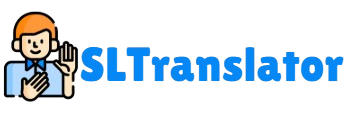French Sign Language Alphabet
French Sign Language (FSL), or Langue des Signes Française (LSF), is a visual-manual language used by over 100,000 individuals in France. It is still widely used today and is considered a precursor to American Sign Language (ASL) and several other national sign languages.
LSF is a unique, three-dimensional language with its own grammar, entirely distinct from spoken French. It uses facial expressions to convey emotion and grammatical cues, spatial positioning to express time and relationships, and a specific word order: time + place + subject + action.
Its vocabulary continues to grow, incorporating iconic signs, influences from the French language, and newly invented terms. Today, LSF remains a vital part of Deaf culture and communication in France.
FAQs About French Sign Language
When was French Sign Language invented?
French Sign Language (LSF) began to take form in the 18th century. It was formalized around 1760 when Abbé Charles-Michel de l'Épée started working with the deaf community in Paris and documented their signs. This marked the beginning of standardized French Sign Language.
Is there French Sign Language?
Yes, there is! French Sign Language, known as *Langue des Signes Française* (LSF), is the official sign language used by the Deaf community in France and parts of Switzerland. It has its own grammar and structure, distinct from spoken French.
Is French Sign Language the same as ASL?
No, French Sign Language (LSF) and American Sign Language (ASL) are not the same, though they are related. ASL was heavily influenced by LSF when it was brought to the United States by Laurent Clerc, a French deaf educator. Over time, ASL evolved into a separate language.
What does 🤟 mean in sign language?
The 🤟 sign means "I love you" in American Sign Language (ASL). It combines the letters I, L, and Y from the ASL fingerspelling alphabet. This handshape is not a standard sign in French Sign Language (LSF), but it is widely recognized internationally as a symbol of love and support.
How do you say French in sign language?
In French Sign Language (LSF), the sign for "French" involves a specific motion near the lips or face, often mimicking the way "French" sounds. It varies slightly depending on the region. In ASL, the sign for "French" involves an "F" handshape flicking from the shoulder outward.
Who invented the French Sign Language?
French Sign Language (LSF) was not invented by a single person—it developed naturally within the deaf community. However, **Abbé Charles-Michel de l'Épée** is credited with recognizing and formalizing it in the 18th century. He is often referred to as the "father of public deaf education" in France.
Which sign language is most used?
American Sign Language (ASL) is one of the most widely used sign languages in the world, particularly in the United States, Canada, and parts of Africa and Southeast Asia. However, each country typically has its own sign language.
What countries speak French Sign Language?
French Sign Language (LSF) is primarily used in France and in some parts of Switzerland, Belgium, and Luxembourg. It has also influenced the development of other sign languages in countries such as the U.S. (ASL), Canada (LSQ), and parts of Africa.
Who is the father of the deaf?
Abbé Charles-Michel de l'Épée is often called the "father of the deaf." In the 18th century, he founded the first free school for the deaf in Paris and helped formalize French Sign Language by documenting and teaching it.
Which country made sign language?
No single country "made" sign language—it developed naturally among deaf communities around the world. However, France played a major role in the history of modern sign language through the work of l'Épée and the development of LSF, which later influenced ASL and others.


























